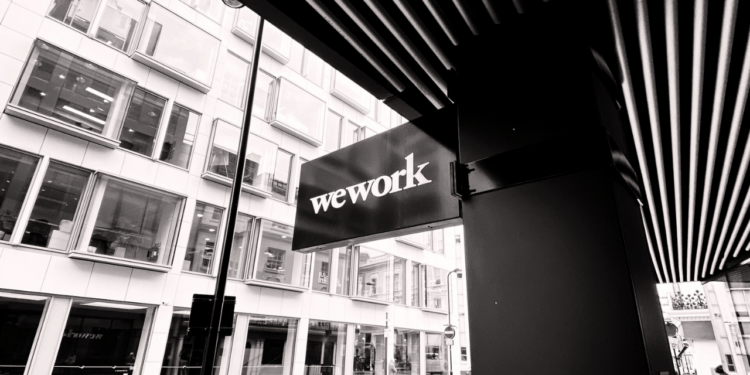- The City of London has the densest concentration of coworking locations anywhere in the world.
- In Australia, WeWork is reported to have leased 15 locations totaling 100,000 sq. m. (equivalent to around 350,000 sq. ft.), with leases as long as 15 years.
- The outstanding rent commitments for the remaining life of these leases is an estimated £3 billion sterling for the U.K. market and A$900 million in Australia. If these commitments proved to be worthless, it would be a heavy blow for the landlords in both countries — and a concern for their lenders.
In my last two articles I have looked at the possible effect of the bankruptcy of WeWork on the level of vacancies in the office market in major U.S. cities, and on the possible knock-on effect on banks with large loans outstanding to the commercial real estate sector. My conclusions were that the vacancy rates would increase as WeWork defaults on leases, and that in markets where the rate is already high, such as San Francisco, this would exacerbate the level of non-performing loans, but that the banks are sufficiently well capitalised to ride out any period of difficulty. Some real estate investment trusts may see their stock prices affected, but the WeWork effect will be difficult to separate from the general weakness of commercial property investment this year, with REIT values down as much as 30% from the highs.
My focus in those articles was on major U.S. cities, as that is where the largest number of WeWork centers are located. But, other countries around the world will also be affected, and this article looks at two in particular: the United Kingdom and Australia.
The City of London has the densest concentration of coworking locations anywhere in the world, thanks to the combination of landlord-friendly lease terms on traditional space, and a large number of financial and professional service firms in a relatively small area.
WeWork had 56 locations in the U.K. spread through the main office markets, but with the main concentration in London. Indeed, the firm was said to be the largest private sector tenant in London, despite having many fewer locations than IWG. This is explained by the fact that WeWork centers are much larger than IWG’s, on average, with the company having leased 3 million sq. ft. at the peak.
In Australia, WeWork is reported to have leased 15 locations totaling 100,000 sq. m. (equivalent to around 350,000 sq. ft.), with leases as long as 15 years.
More important than the physical space is the financial commitment to landlords to pay rent over the remaining life of the leases. This commitment, which landlords rely on to service their debt finance, is now at risk. The size of that commitment has been estimated by real estate journalists as totaling £3 billion sterling for the U.K. market and A$900 million in Australia. If these commitments proved to be worthless, it would be a heavy blow for the landlords in both countries — and a concern for their lenders.
As I explained in the previous article, my view is that WeWork is a potentially such valuable business, under the right management, it is almost unthinkable that it should disappear completely. There is more than sufficient capital available in the hands of private equity firms to fund the necessary restructuring and install competent industry management, or to merge WeWork with anther operator. While IWG is the obvious candidate for such a consolidation, it would not necessarily be the best — either for financial or industry reasons —as the two businesses have quite different styles of operation, leading to potential issues in integrating them.
In the HQ Global Workplaces roll-up years ago, higher than expected integration expenses was one of the factors leading to the group’s collapse. One advantage that IWG does have, however, is a high-quality tech capability in the Instant Group, which should prove a big advantage in any complex restructuring. It would be ironic if WeWork, which for so long claimed to be a tech company, was taken over by IWG, which has never made that claim, and if one of the factors in that takeover was IWG’s superior technology.

 Dr. Gleb Tsipursky – The Office Whisperer
Dr. Gleb Tsipursky – The Office Whisperer Cat Johnson – Coworking Marketing Maven
Cat Johnson – Coworking Marketing Maven Angela Howard – Culture Expert
Angela Howard – Culture Expert Drew Jones – Design & Innovation
Drew Jones – Design & Innovation Andrea Pirrotti-Dranchak – Competitive Advantage
Andrea Pirrotti-Dranchak – Competitive Advantage Jonathan Price – CRE & Flex Expert
Jonathan Price – CRE & Flex Expert Jeremy Fennema – Tech Innovation Alchemist
Jeremy Fennema – Tech Innovation Alchemist







